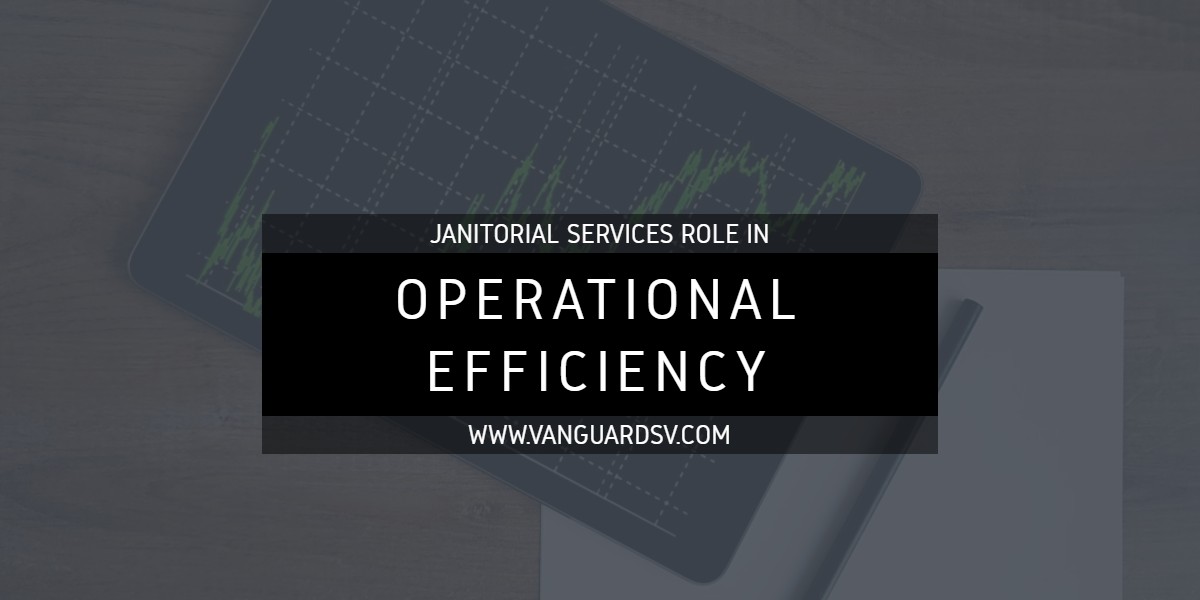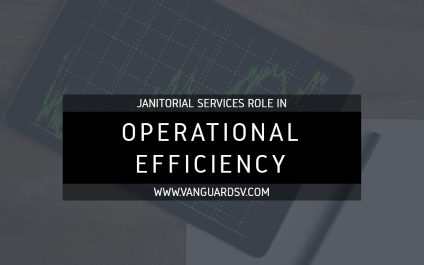Outsourced janitorial services can help improve your organization's operational efficiency through waste reduction, cost-effective purchasing, and procedural realignments.

Janitorial Services Role in Improving the Operational Efficiency of Schools and Businesses
The landscape of modern business requires a shift in thinking and a realignment of processes to remain competitive.
To achieve this, organizations must adapt their businesses procedures to reduce waste and increase efficiency, in the form of green, sustainable business practices, by:
- Optimizing human resource utilization, and;
- Reducing material resource waste.
Optimizing Human Resource Utilization
Optimizing human resources to align with modern business goals requires a multi-pronged approach, including:
- Investment in training and technology - Training should extend to all building occupants to ensure protocols are adhered to (e.g., using correct recycling and trash bins). Technology should stretch beyond the tools janitorial staff use to clean, to IoT monitored devices, smart and self-cleaning technologies, as well as communication, knowledge sharing, and occupant feedback systems.
- Enhanced safety protocols - Enhancing your organization's safety includes everything from eliminating the use of toxic chemicals to infrastructure improvements that eliminate potential accidents and hazardous working conditions and should be a focal point when considering investments in training and technology advancements. This will reduce costs associated will workplace caused illness and injury, as well as improve performance and occupant satisfaction.
The value of optimizing human resource utilization was demonstrated in a recent publication by Pristine Environments;
When you look at the incremental cost of one hour of labor, the cost benefits of saving this unit of labor input can be staggering for any facility.
For example, 1 hour per day @ $11.00 per hour (this includes labor burden) X 5 days a week equals $55.00.
A labor reduction of $55.00 X 52 weeks in a year equals $2,860.00 of direct bottom-line costs.
This is a small example of potential cost savings; it’s not uncommon to see a 10%-20% or better reduction in labor costs dependent on current cleaning methods.
It’s impossible to put a value on improved cleaning quality, which contributes to a healthy environment and even in some studies, the student & occupant productivity rates.
Sustainability Strategies & Labor Force Optimization Solutions for Facilities
Reducing Material Resource Waste
An analysis of your facility will likely uncover numerous areas of material resource waste that can/should be minimized or eliminated.
This can include decisions as simple as:
- Switching to microfiber towels and mops to eliminate water and gas use.
- Consolidating cleaning products and disinfectants, and;
- Converting to EPA certified Category IV disinfectants, which have a significantly longer shelf-life than Category I, II, and III disinfectants, without the harmful side effects.
Or as complicated as:
- Leveraging technology to facilitate on-demand resource (paper towel, soap, and toilet paper) replacement and services by monitoring occupant use and traffic, as well as water and energy efficient cleaning appliances, such as advanced floor scrubbers and electrostatic cleaners.
- Infrastructure improvements, especially windows, that leverage natural sunlight to reduce facility lighting and heating costs, and;
- Adjusting office layouts to improve cleaning efficiency and worker exposure to natural air and sunlight.
The ultimate goal of material resource optimization is the achievement of zero-waste and full sustainability, which has been shown to have a tremendous impact on a business's profits.
According to a case study of Interface, the worlds largest carpet cleaning company, published by Zero Waste Europe;
Since the adoption of its zero-impact goals in 1995 the firm’s use of fossil fuels and water, its greenhouse emissions and waste generation has fallen dramatically, while sales have increased by 2/3 and profits have doubled.
Interface has diverted 74000tons of used carpets from landfills, while 1/4 of its materials are renewable and recycled.
The 400$ million Interface saved in costs avoided through the pursuit of Zero Waste has paid for all the costs of transforming its practices and facilities.
References & Resources
- 8 Tips to Reduce Your Labor Costs
- Strategic Management of Built Facilities
- Working Smart in a Tough Economy
- Optimizing Facility Cleaning Operations to Reduce Labor Costs
Takeaway
Improving the operational efficiencies of your facilities starts by ensuring you are maximizing the utilization of human resources through investment in training and technology, as well as health and safety.
The elimination of even one hour per day wasted to inefficiency has been demonstrated to have a significant financial impact over the course of a year.
Optimizing material resource use and taking control of how waste is generated and diverted has been shown to significantly reduce operational costs while improving sales.
If you would like to learn more about the role janitorial services play in ensuring proper occupant hygiene, contact us today for a free quote!
In Bakersfield CA, call (661) 437-3253
In Fresno CA, call (559) 206-1059
In Valencia CA, or Santa Clarita CA, call (661) 437-3253

